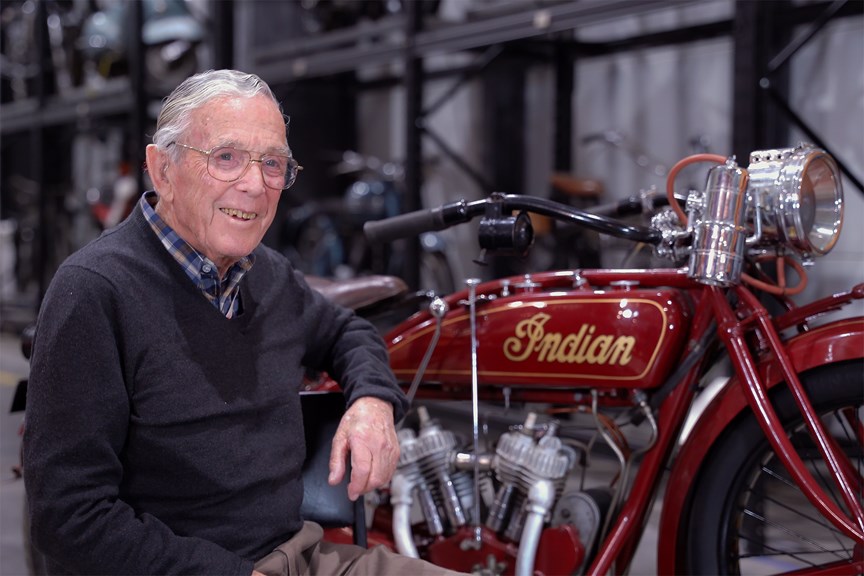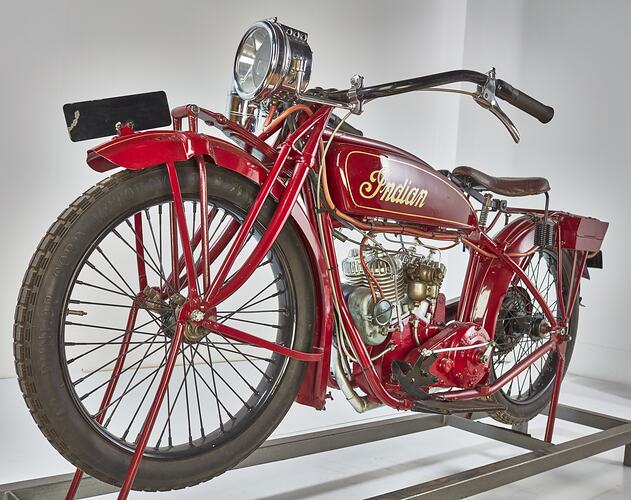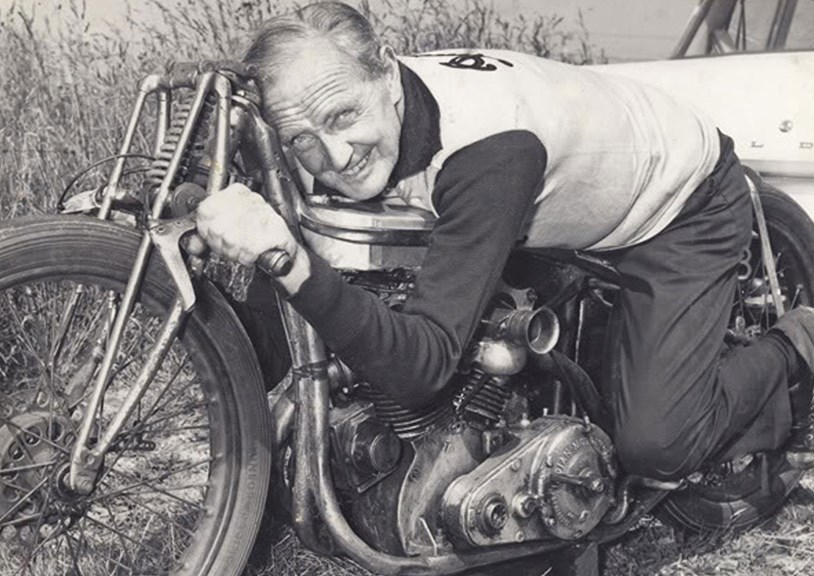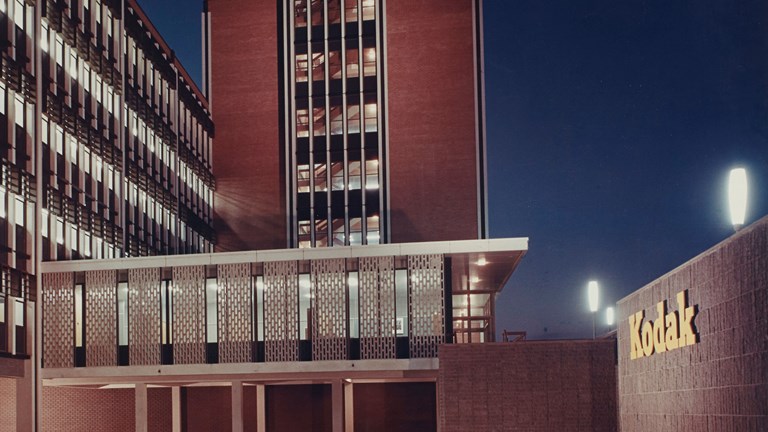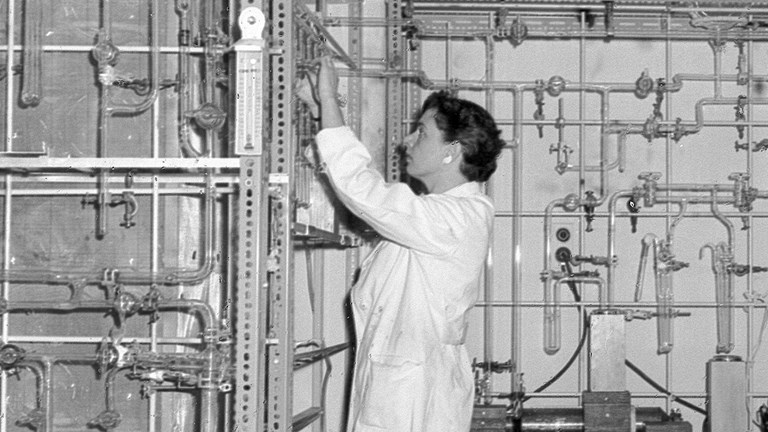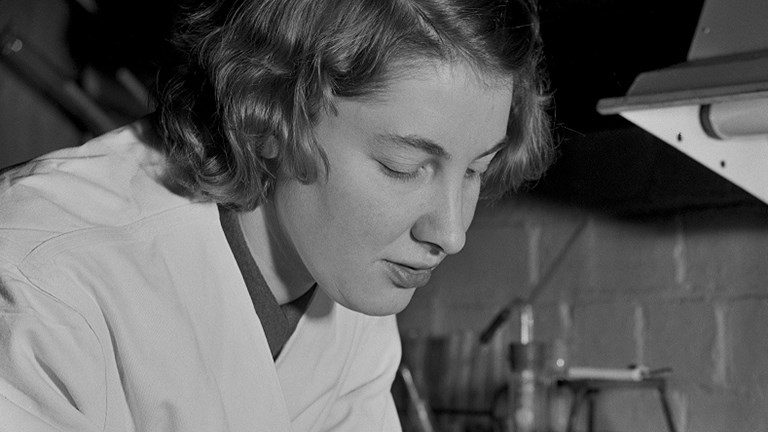A man and his rare Indian motorcycle, reunited
91-year-old Don Parkinson returns to the museum to revisit the 1923 Indian Scout motorcycle he restored more than 40 years ago.
Motorcycles were always a part of Don Parkinson’s life, much to the dismay of his parents.
‘Ever since I was 16, I had a motorbike…mum and dad didn’t like motorbikes in them days,’ he laughs.
The 91-year-old enthusiast, from Adelaide in South Australia, has chased motorcycles around the world, including to the infamous Isle of Man TT race.
And a big part of this life-long love affair is giving new life to old motorcycles, including this 1923 Indian Scout which he rescued from a shed in the Adelaide Hills in the mid-1970s.
‘A friend of mine told me where it was,’ recalls Don.
‘At that time we didn’t know what it was—Indian, Harley [Davidson].
‘The old bike was in the woodshed and these people had bought the house; they were cleaning up and all they wanted to do was get rid of it.
‘It was going to be dumped in any case.
‘They said if you want it, take it.’
And so, Don and his friend tied it to the carrier on the back of his Studebaker.
‘It was near Mount Lofty, up in the hills, so we had ropes tied around through the windows to get it home to my place.’
Restoring a rarity
Don’s motorcycle was among the earliest 600cc Scout models made by the Indian Motorcycle Company in Springfield, Massachusetts, in the United States of America.
By this time, it was already more than 50 years old.
‘It was very rusty, the rust was getting into it bad, but the best part was I could see everything was on it,’ says Don.
‘I wasn’t chasing parts.’
Which is fortunate, because the company that made it went bankrupt in 1953—two decades before Don acquired his.
Try as he might though, Don couldn’t find a workshop manual for the bike to help him in its restoration.
Instead, he turned to the local Veteran and Vintage Motorcycle Club for help.
‘A chap by the name of Wally Woolat [the club’s president] gave me some hints,’ Don says.
‘He was a lot of help.’
Other club members also offered assistance during the painstaking process.
Fortunately, Don had already restored a few other motorcycles by this time and knew to keep track of every piece as it came off the Indian.
‘Before you start pulling things to pieces you’ve got to know what you’re doing,’ he laughs.
‘It was pulled to pieces very carefully…I was always very particular.
‘I never lost track of anything—took notes of what I’d taken to bead blasters or things like that.’
But space at the family’s home was limited, and he had limited time to work on it.
‘I’d put a big family room on the back of my house, and I had a pool table for the boys, and that got boarded up of a night time so I could get things right on the old Indian.’
Altogether, Don says it took him about two years to completely tear down and restore the Scout to its former glory.
The world’s fastest Indian
While Don’s motorcycle is all original, the Indian Scout is perhaps best known for a heavily modified version that broke land speed records in the 1960s.
Burt Munro, from Invercargill in New Zealand, took his 1920 Indian Scout to its physical limits by stripping it down and boring the engine out to 950cc.
He took this motorcycle, dubbed the ‘Munro Special’, to the Bonneville Salt Flats and, in 1967, set an under 1000cc record of 184 miles per hour (296 km/h) which still stands today.
But back in Australia, Don wasn’t so keen on doing anything so risky with his freshly restored Indian Scout.
In fact, he barely rode it.
‘Only up the street,’ he laughs.
And so, in 1985, when it was time to move on to another restoration project, Don was looking to sell—which is where the museum comes in.
‘I’d come over for an auction of motorcycles at Melbourne Town Hall,’ says Don.
And after a conversation with the auctioneer, Don was put in touch with Museums Victoria’s then curator of engineering and transport, Bill Sidebottom.
‘At the time the museum acquired this motorbike they were going through a bit of an expansion phase,’ says Matthew Churchward, the museum’s now senior curator of engineering and transport.
‘Bill Sidebottom was actively trying to acquire examples of typical motorcycles of the 20th century.’
And with its side-valve v-twin motor, left hand throttle and foot-operated clutch, the Indian Scout stood out.
For nearly four decades it has been part of the Museums Victoria State Collection, and resides alongside the other motorcycles in the Scienceworks store.
So, what is it like to see his restoration project after all these years?
‘It hasn’t changed!’ laughs Don.
And, as for Don, he is still restoring motorcycles out of a shed in his retirement home in Adelaide with no signs of stopping any time soon.
Interested in seeing Don’s Indian Scout in person? Come on a tour of the collection at Scienceworks.

